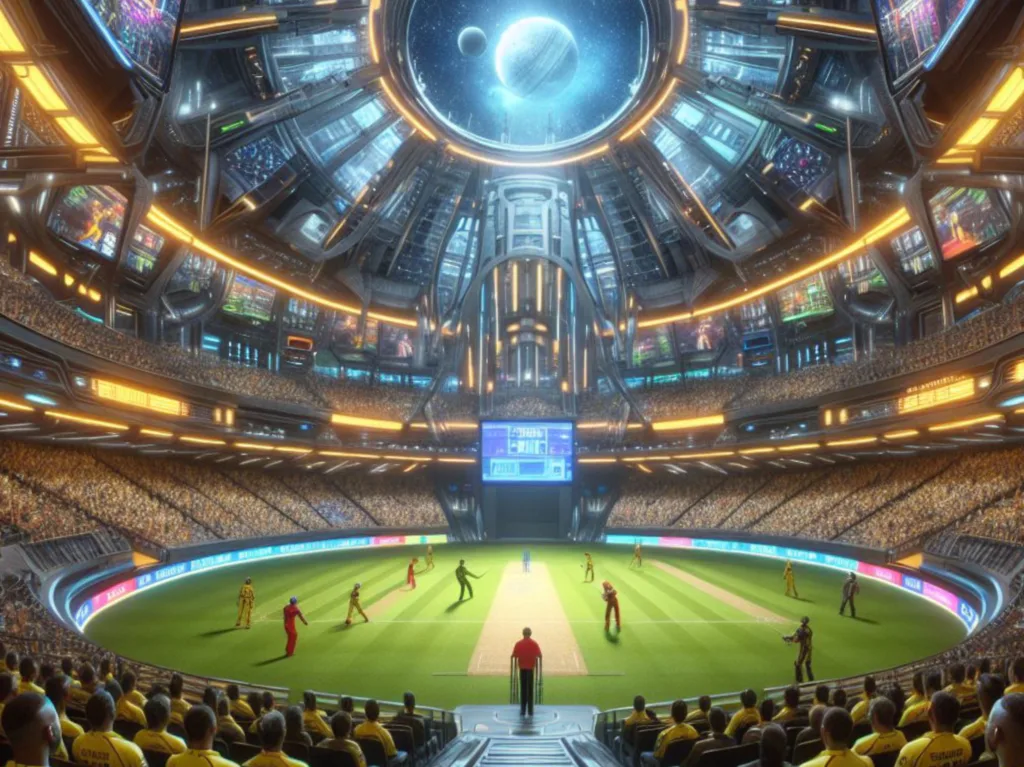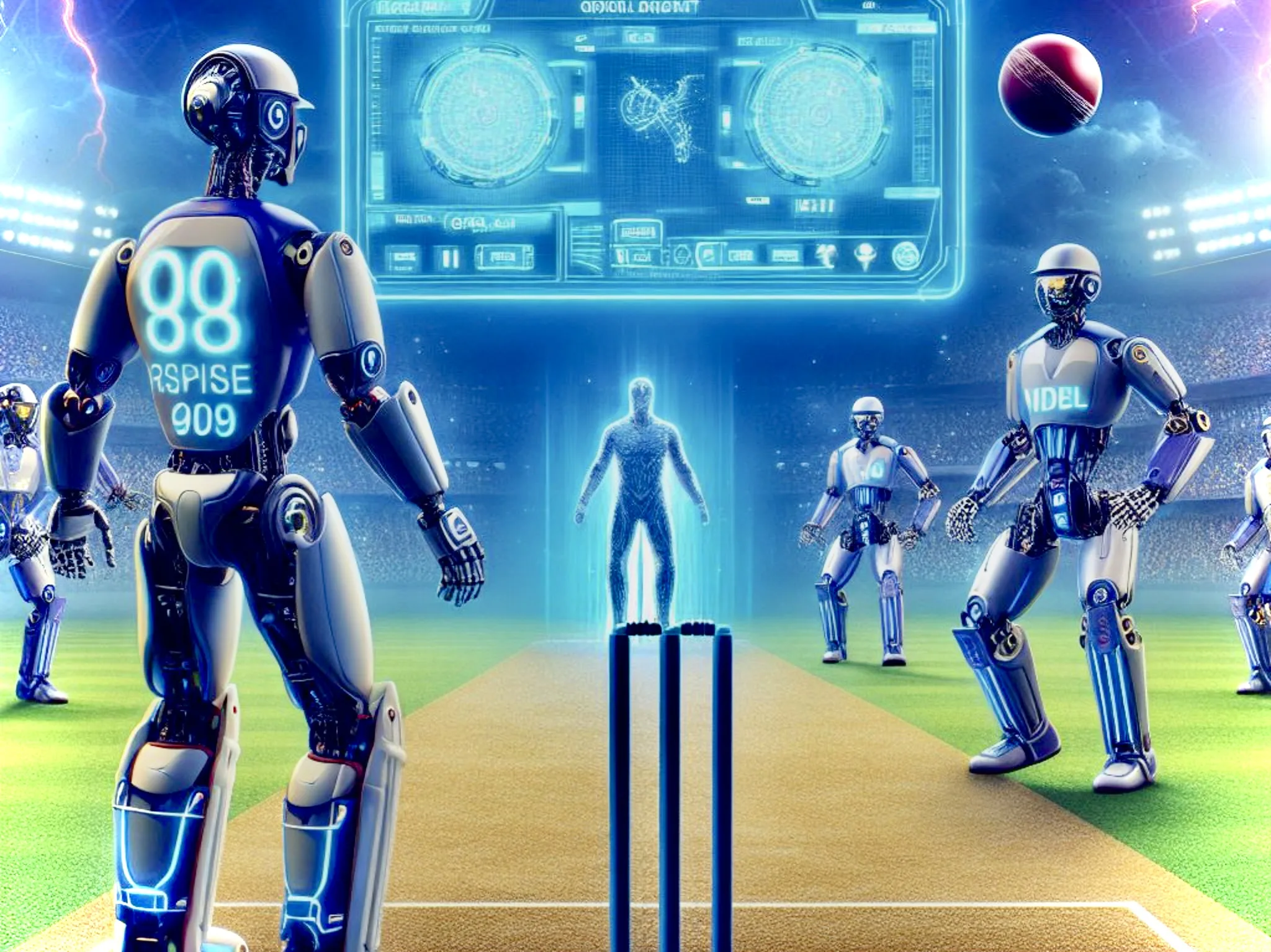Introduction
Cricket, often hailed as a game of uncertainties, witnesses crucial moments that can sway the outcome of matches. To address the challenges of decision-making accuracy, the Indian Premier League (IPL) has introduced the Smart Replay System for the 2024 season. This revolutionary technology promises to transform umpiring standards, offering real-time analysis and enhancing decision-making efficiency.
Table of Contents
Evolution of Umpiring Technology
Over the years, cricket has witnessed a significant evolution in umpiring technology. Initially reliant on human judgment, the introduction of third umpires in the 1990s marked a significant shift, enabling off-field officials to review decisions. Subsequently, the Decision Review System (DRS) further refined umpiring by incorporating advanced technologies like ball tracking and ultra-motion cameras. The latest advancement, the Smart Replay System, takes umpiring to new heights with high-speed cameras and real-time analysis, ensuring fair and accurate decisions on the field.
The Need for a Smart Replay System
In cricket, the demand for precise decision-making has never been higher, especially with the fast-paced nature of modern formats like T20. Traditional umpiring methods, while effective, can sometimes fall short in accurately adjudicating crucial moments of the game.
With the global popularity of cricket and increased media scrutiny, the pressure on umpires to make accurate calls has intensified. The Smart Replay System addresses this need by providing umpires with advanced tools, such as high-speed cameras and real-time analysis, to review key moments with unprecedented clarity.
By better technology, the Smart Replay System promotes transparency and fairness in decision-making, instilling confidence in players, fans, and officials alike. Ultimately, its introduction reflects a commitment to upholding the highest standards of accuracy and integrity in cricket officiating, ensuring a more enjoyable and equitable experience for all involved.
Components of the Smart Replay System
Hawk-Eye Cameras
Hawk-Eye cameras are a game-changing innovation in cricket technology, offering unparalleled insights into on-field dynamics. Strategically positioned around the ground, these high-speed cameras track the ball’s trajectory with remarkable precision.
With advanced algorithms and image processing, Hawk-Eye cameras provide 3D replays, aiding umpires in making accurate decisions on lbw appeals, catches, and run-outs. Additionally, they play a crucial role in supporting technologies like the Decision Review System (DRS), enhancing officiating accuracy.
Hawk-Eye Operators
Hawk-Eye operators are essential individuals responsible for managing the high-speed cameras positioned around the cricket ground. With specialized training, they provide real-time visuals and data to umpires for decision-making, ensuring accuracy in calls like lbw appeals and run-outs. Their swift response and attention to detail contribute to the efficiency of technologies like the Decision Review System (DRS), ultimately enhancing the quality of officiating in cricket.
TV Umpires
Empowered by direct inputs from Hawk-Eye operators, TV umpires oversee the decision-making process with enhanced clarity and efficiency. They utilize the Smart Replay System to assess various scenarios, including stumpings, run-outs, catches, and overthrows.
Direct Inputs
Direct inputs are real-time information and visuals provided to umpires, especially TV umpires, during cricket matches. These inputs offer enhanced clarity and insights into on-field situations, allowing umpires to make informed decisions swiftly and accurately.
With technologies like the Smart Replay System, umpires have direct access to multiple camera angles and replays, streamlining the decision-making process. By receiving real-time information directly from operators, umpires can assess situations efficiently, ensuring fair outcomes and maintaining the integrity of the game.
Functionality of the Smart Replay System
Decision-Making Efficiency
With the Smart Replay System, decision-making in cricket reaches new heights of efficiency. TV umpires can analyze multiple angles and split-screen views to make informed judgments within seconds, reducing the margin for error.
Enhanced Visuals
The integration of Hawk-Eye technology provides enhanced visuals, allowing TV umpires to scrutinize critical moments with unprecedented clarity. From close catches to run-out decisions, every aspect of the game receives a thorough examination.
Real-Time Analysis
Gone are the days of prolonged deliberation. The Smart Replay System offers real-time analysis, enabling TV umpires to assess situations swiftly and provide timely decisions. This ensures smooth gameplay and maintains the integrity of the sport.
Referral System
In addition to on-field decisions, the Smart Replay System facilitates the referral process for contentious moments. Utilizing technology like the Decision Review System (DRS), teams can contest decisions with confidence, knowing that outcomes are determined based on concrete evidence. This system adds excitement and strategy to the game while promoting fairness and transparency in decision-making. It also serves as a learning opportunity for players and officials, enhancing the overall integrity of the sport.
Implementation Details

Training Workshop
To prepare for the implementation of the Smart Replay System, a comprehensive training workshop was organized by the Board of Control for Cricket in India (BCCI). Umpires, both Indian and overseas, underwent rigorous training to familiarize themselves with the new technology and its functionalities.
Umpire Selection
A select group of umpires has been chosen to officiate matches using the Smart Replay System during IPL 2024. Selecting umpires for the Smart Replay System in cricket involves identifying individuals with technical expertise, adaptability, and strong decision-making skills. Candidates undergo rigorous evaluation to assess their understanding of the system, ability to interpret real-time data, and proficiency in making informed decisions. Key criteria include technical proficiency, adaptability, decision-making skills, communication, and professionalism. By choosing umpires who meet these criteria, cricket organizations ensure effective utilization of the Smart Replay System, enhancing the accuracy and fairness of officiating in matches.
Integration in IPL 2024
The Smart Replay System will be integrated into IPL 2024, revolutionizing the way decisions are made on the cricket field. Fans can expect fairer outcomes, faster decision-making, and an enhanced viewing experience, thanks to this groundbreaking technology.
Real-World Applications
Overthrows
In scenarios involving overthrows, the Smart Replay System enables TV umpires to determine if the batsmen crossed paths during the throw, ensuring accurate assessment of runs scored and fielding errors.
Stumpings
With split-screen views and real-time analysis, the Smart Replay System provides TV umpires with the tools to adjudicate stumpings swiftly and accurately. Every frame is scrutinized to ensure fairness in decision-making.
Run-Outs
From close run-outs to sliding finishes, the Smart Replay System leaves no room for ambiguity. TV umpires can review multiple angles to ascertain the precise moment when the bails were dislodged, making informed decisions with confidence.
Broadcasting Partnership
JioCinema, the official broadcasting partner of IPL 2024, will provide extensive coverage of the tournament in multiple languages. Fans can enjoy the action live and for free, immersing themselves in the thrill of cricket’s biggest extravaganza.
Languages
In a testament to its global appeal, IPL 2024 will be broadcast in 12 languages, catering to diverse audiences worldwide. Commentary and coverage are provided in multiple languages, fostering inclusivity and enhancing the viewing experience for fans worldwide. From English to regional languages like Hindi, Gujarati, and Marathi, cricket enthusiasts can enjoy the spectacle in their preferred language. This approach expands the sport’s reach, promotes cultural exchange, and ensures that all viewers can enjoy the game in their preferred language.
FAQs
What is the Smart Replay System?
The Smart Replay System is a technology used in cricket to assist umpires in making more accurate decisions by providing visual evidence from high-speed cameras.
How does the Smart Replay System work?
The system captures footage from strategically positioned cameras and allows umpires to review key moments, such as stumpings and catches, from multiple angles for better decision-making.
Why is the Smart Replay System important?
The Smart Replay System helps reduce errors in umpiring decisions, ensuring fairness and integrity in cricket matches.
Which match situations does the Smart Replay System cover?
The system covers various scenarios, including stumpings, run-outs, catches, overthrows, and LBW decisions, providing umpires with enhanced clarity.
Does the Smart Replay System replace on-field umpires?
No, the Smart Replay System complements the role of on-field umpires by providing them with additional tools to make more informed decisions.
Conclusion – Smart Replay System
In conclusion, the introduction of the Smart Replay System marks a significant leap forward in cricket officiating, revolutionizing the way umpires make decisions on the field. By harnessing advanced technology, such as high-speed cameras and real-time analysis, the system enhances the accuracy, fairness, and integrity of umpiring decisions across various match situations. Furthermore, the transparency and accessibility provided by the Smart Replay System contribute to a more engaging and enjoyable viewing experience for cricket fans worldwide. As the sport continues to evolve, the Smart Replay System stands as a testament to the ongoing efforts to embrace innovation and uphold the highest standards of officiating in cricket.
READ MORE (1)

